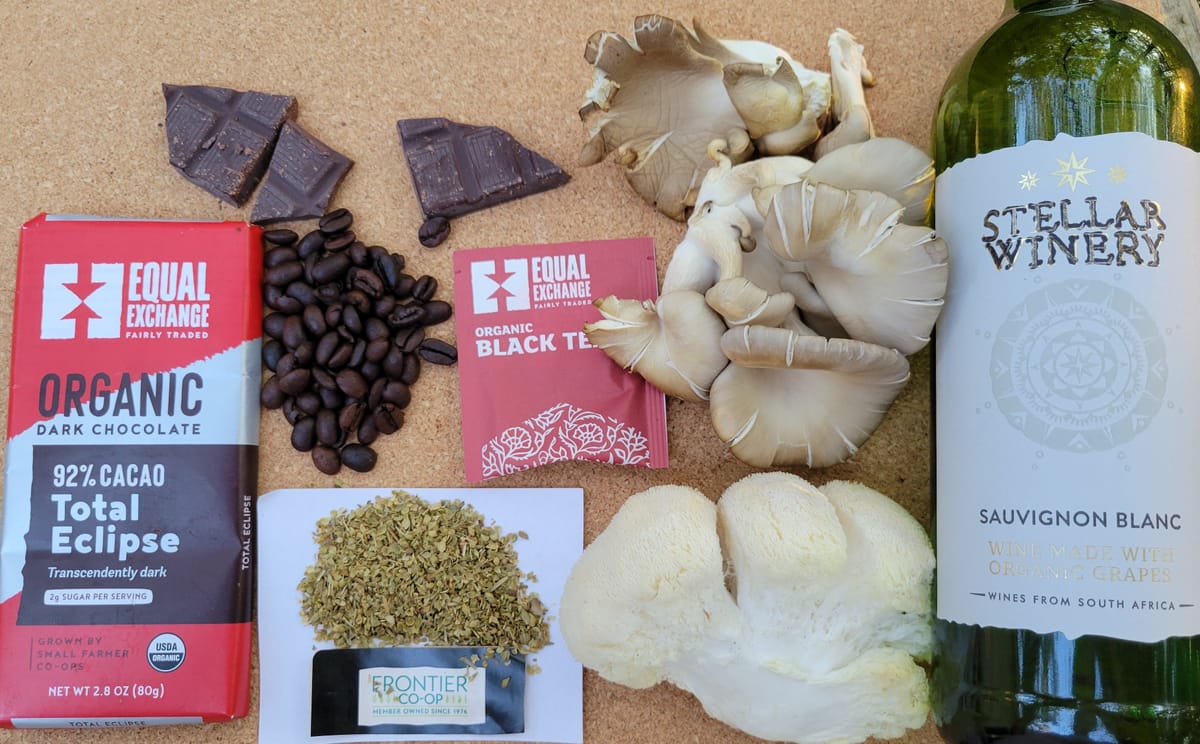National Co-op Month
Take a co-op food tour around the world before ending in Oxford.

October is National Co-op Month, observed annually since 1964. This year’s theme is “Co-operatives Build a Better World.” This column is normally devoted to locally grown and produced food, but inevitably some of our food comes from elsewhere. This week, we’ll take a co-op food tour around the world before ending in Oxford.
Our tour starts near Kys Halte, South Africa, where about 80 farmworkers own Stellar Winery. Under apartheid, South Africa’s wineries and vineyards were all owned by whites and nearly all workers were Black people. After dismantling the apartheid laws, not much changed in the wine industry at first – until Stellar.
Through the intervention of a close associate of Nelson Mandela, Stellar was reorganized in 2002 as a worker-owned cooperative. Given that nearly all of Stellar’s workers were Black people, it became South Africa’s first Black-owned winery and vineyard.
As a cooperative, Stellar’s owners – i.e. the workers – make decisions. For example, they stopped using chemicals on the fields, secured organic status, and became the world’s first winery to be certified as Fair Trade. Stellar’s co-op uses its revenues to improve their lives, including health care coverage for their families, renovated housing, upgraded transport, and a school program about why cooperatives are special. Stellar’s organic wines are available in Oxford only at MOON Co-op, courtesy of Natural-State Wine, a two-generation family-owned company in Columbus that specializes in working with small family- and cooperative-owned wineries.
Highlighting another growers cooperative, about 220 farmworkers in Peru own El Quinacho Co-op, which grows organic cacao beans. This co-op operates in stark contrast to conditions in West Africa, where around 70% of the world’s cacao beans are grown, including deforestation and forced child labor.
Our co-op food journey takes us next to a producer-owned co-op, Equal Exchange, which makes chocolate candy and roasts coffee in Massachusetts. Each of Equal Exchange’s 145 employees owns an equal share of the company. Most of its revenues support farmworker cooperatives, primarily in Central America and northwestern South America, including El Quinacho Co-op, that supply Equal Exchange with organic cacao beans, organic coffee beans, organic vanilla and organic sugar cane. Equal Exchange is MOON Co-op’s principal supplier of coffee beans and chocolate.
All cooperatives, including Equal Exchange and MOON, adhere to seven international principles, one of which is that co-ops help other co-ops. Consistent with that principle, MOON Co-op’s coffee grinder and coffee maker are gifts from Equal Exchange.
In the conventional food distribution system, intermediaries between farms and manufacturers pocket an extremely high share of revenue. In contrast, Frontier Co-op is a distributor-owned cooperative based in Iowa that obtains herbs and spices directly from organic and certified Fair Trade farms around the world and sells them directly to co-op groceries. MOON Co-op’s bulk section stocks 72 herbs and spices and 25 loose teas supplied by Frontier Co-op.
Only 35 miles from Oxford, Guided By Mushrooms is a cooperative that delivers mushrooms, as well as tinctures and powders, directly to MOON Co-op. The business was founded in 2018 by David Sparks, his wife Audra Sparks and her brother Michael Goldstick. A couple of years ago, they converted the business to a workers co-op that included several employees.
Our co-op food journey ends here in Oxford at MOON Co-op, which is a consumer-owned cooperative, owned by (currently) 1,020 mostly Oxford-area households. Thus, the food cooperative chain starts at farmworker-owned co-ops, moves through producer- and distributor-owned co-ops, and ends at a consumer-owned co-op like MOON.
James Rubenstein is president of the Board of Directors for the Oxford Free Press and professor emeritus of geography at Miami University.




